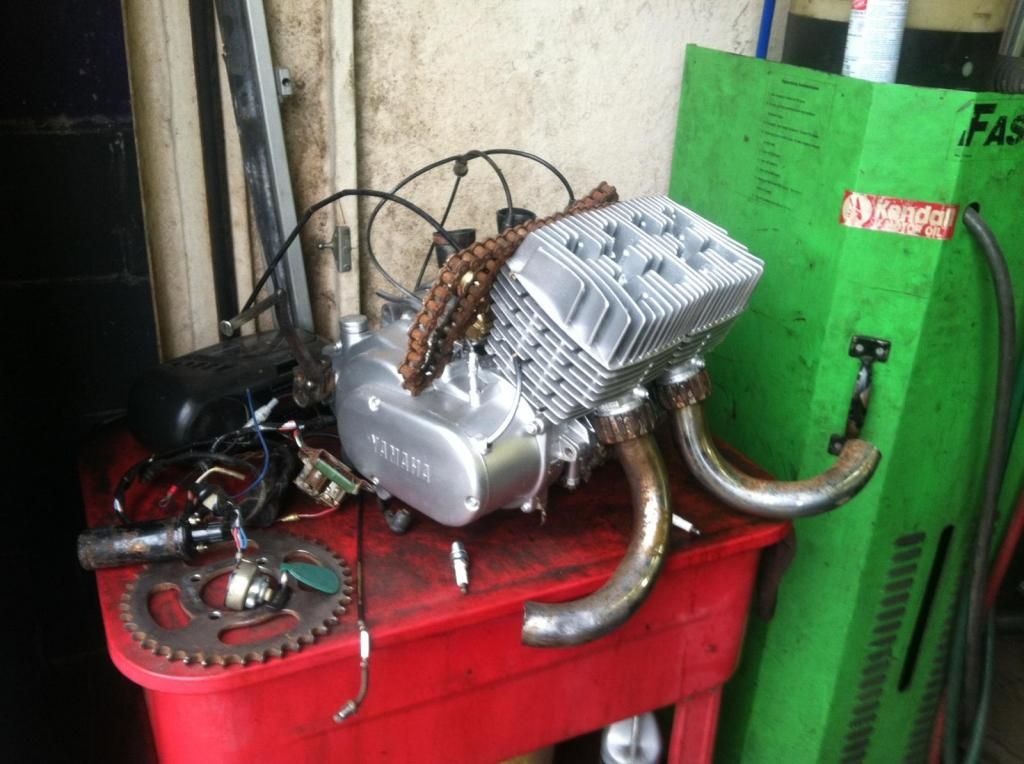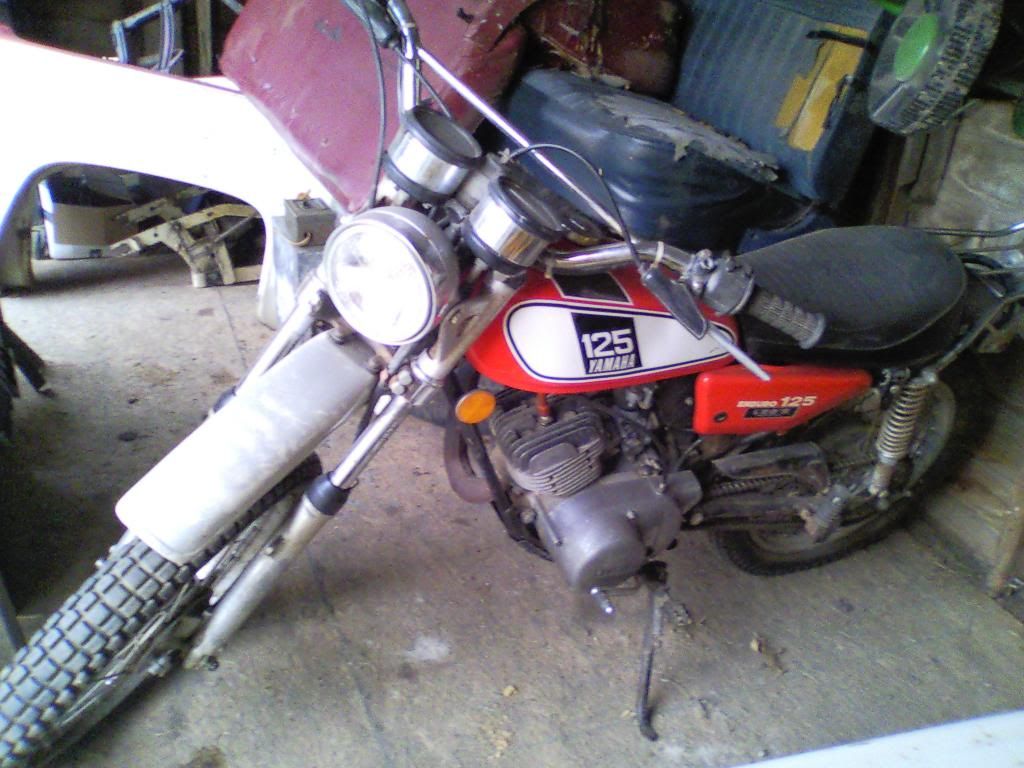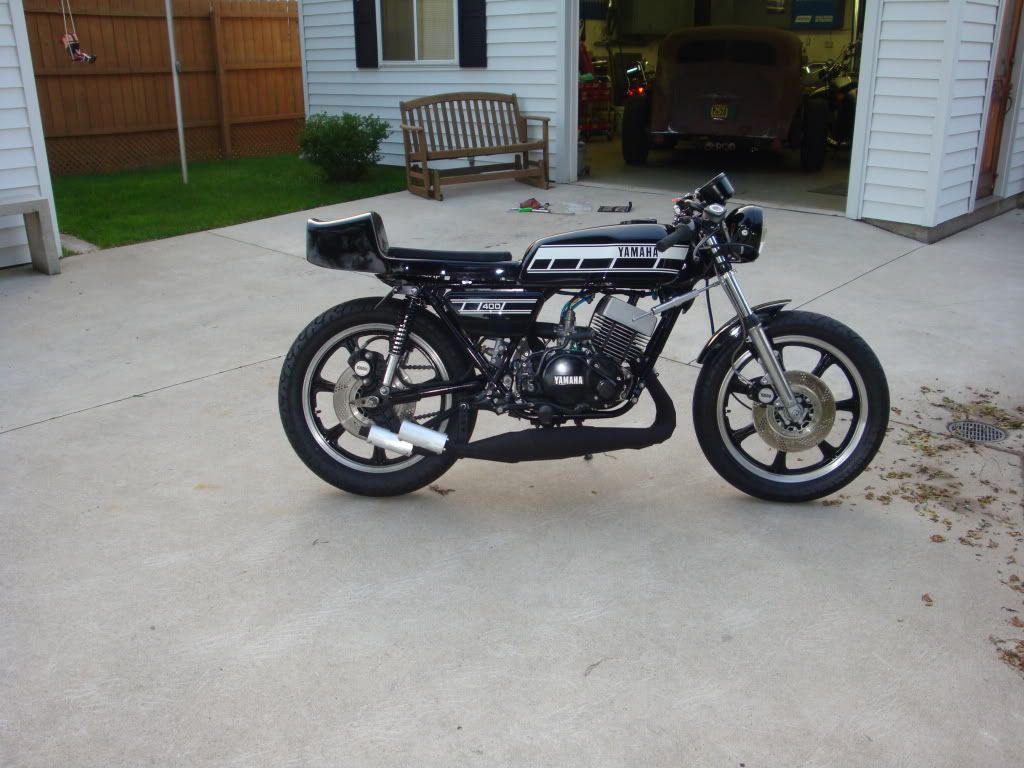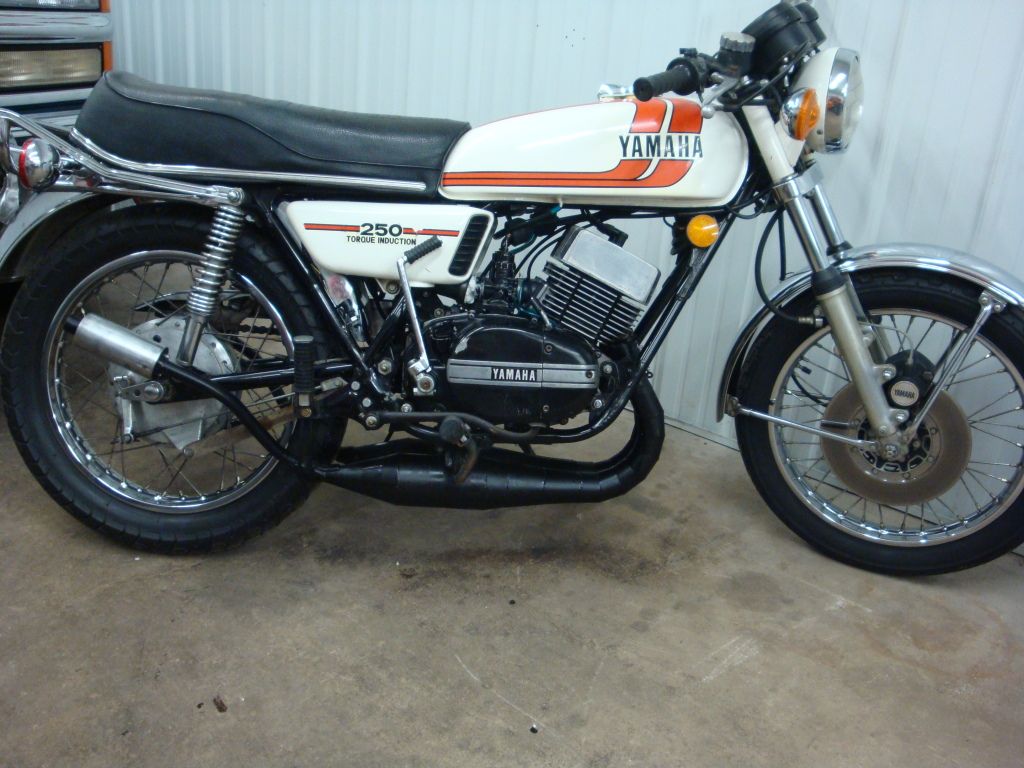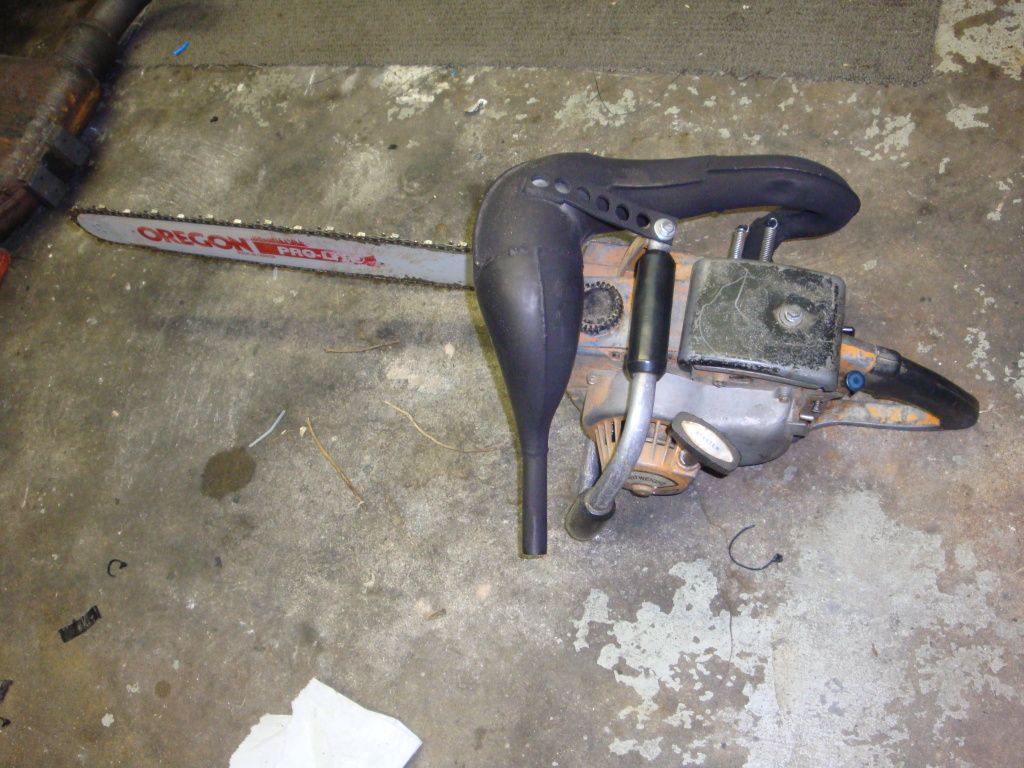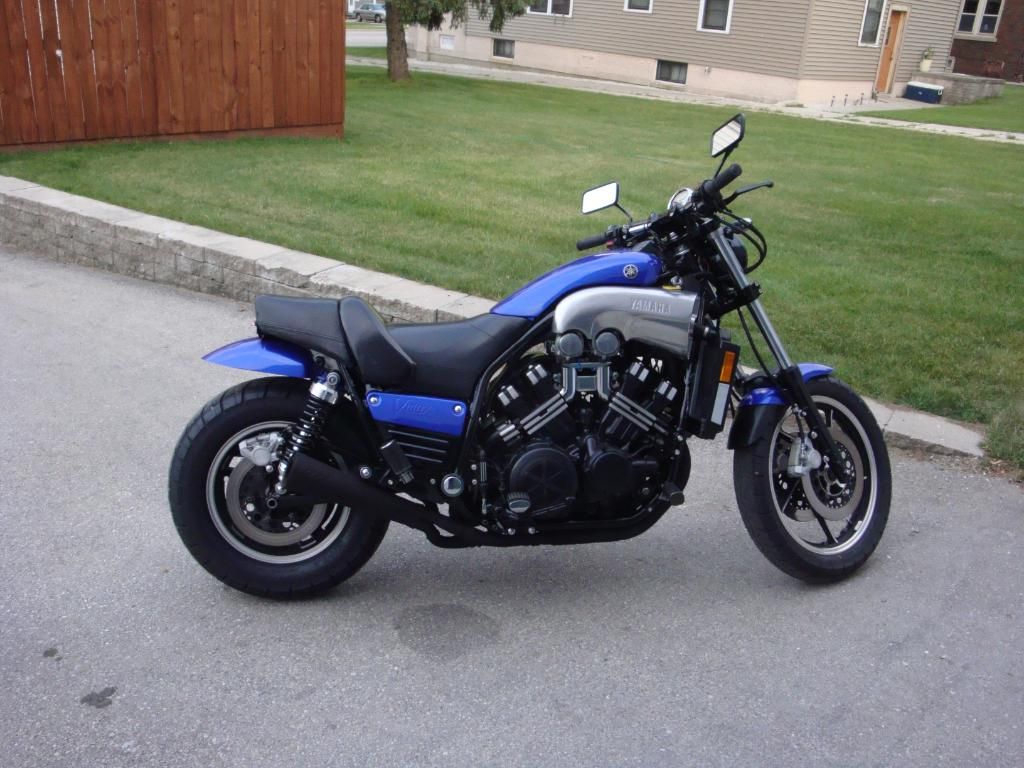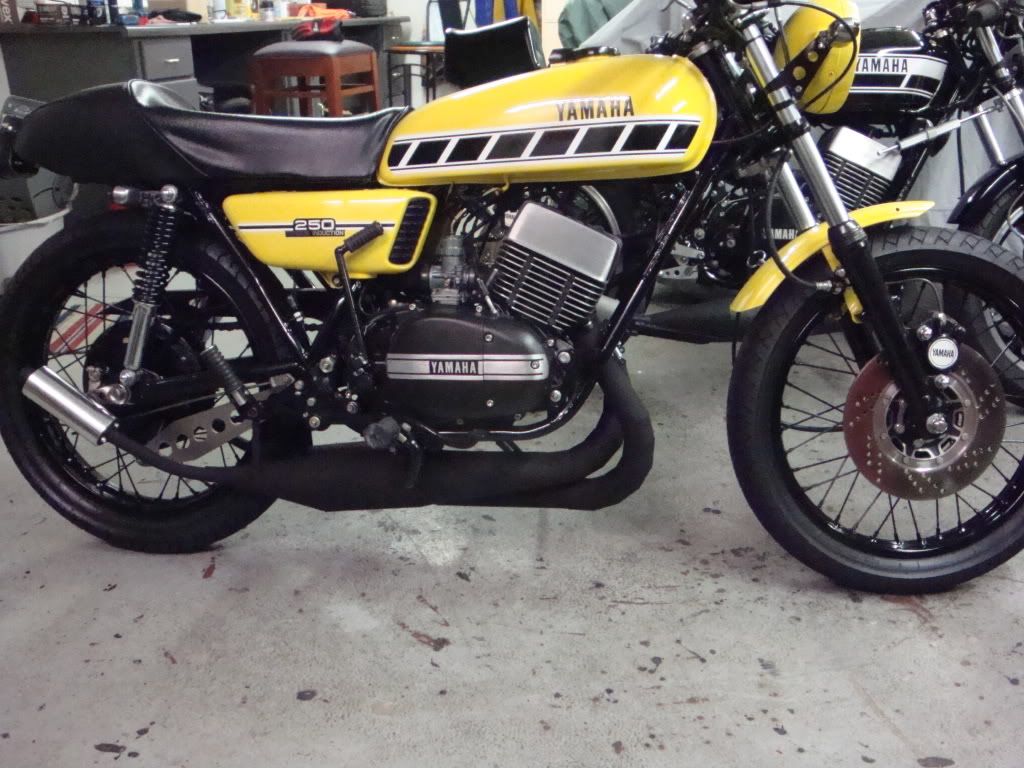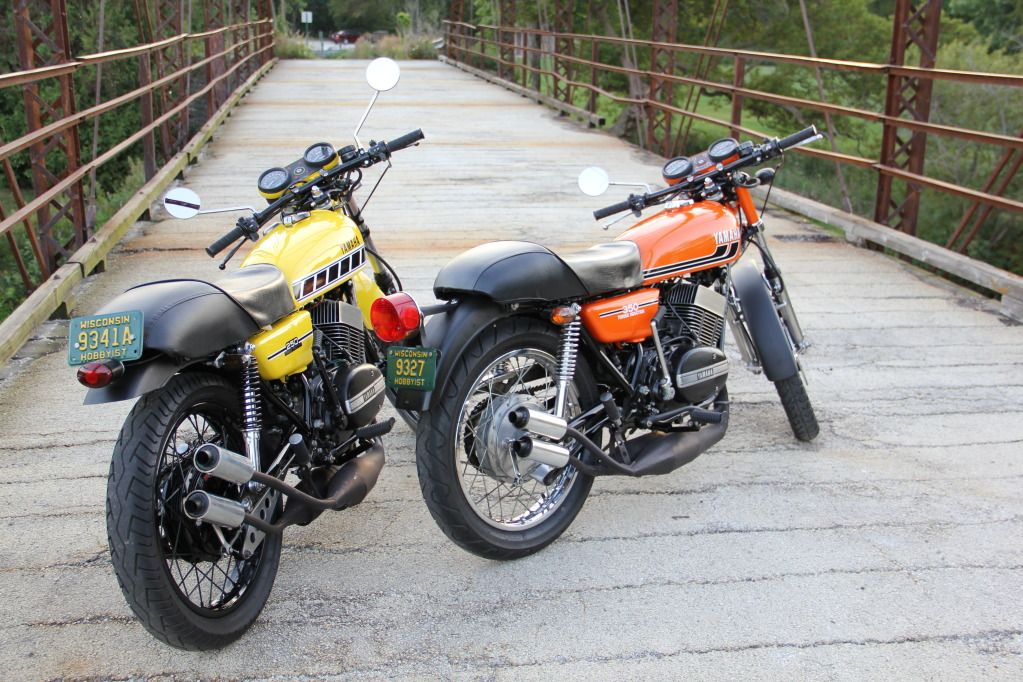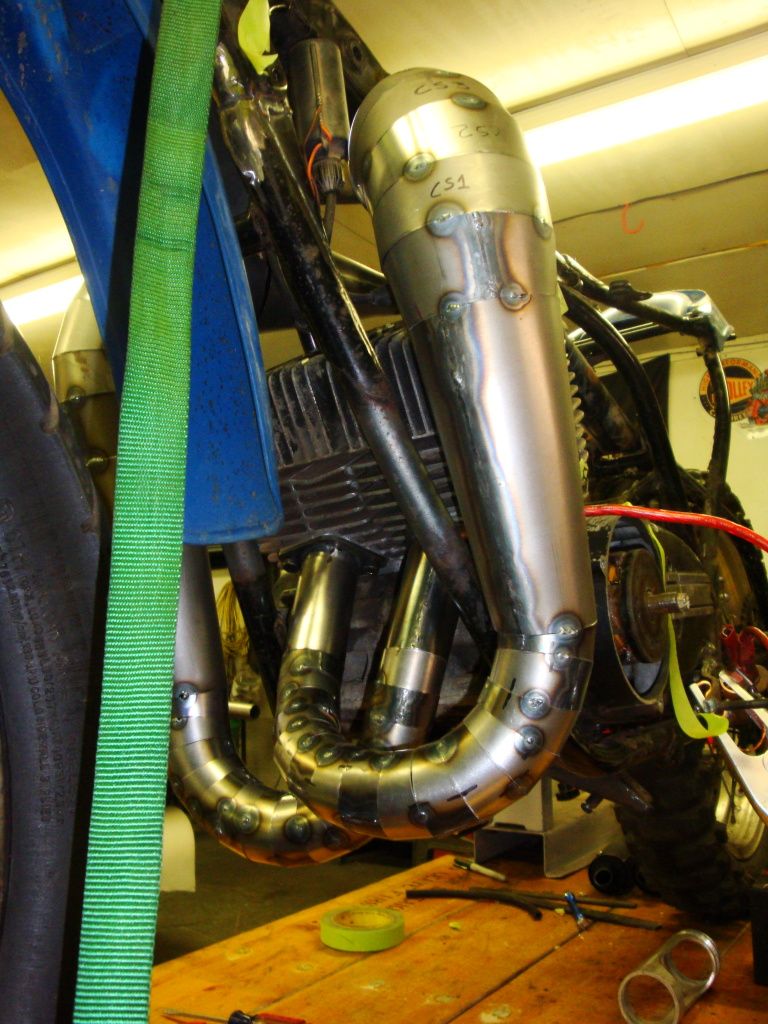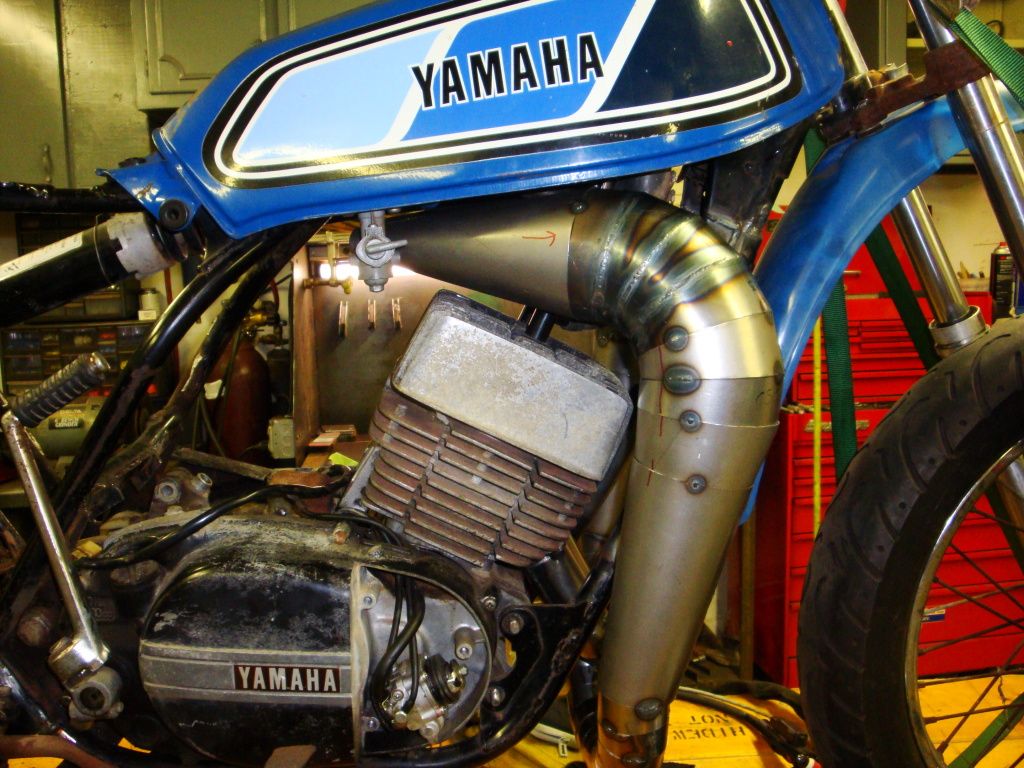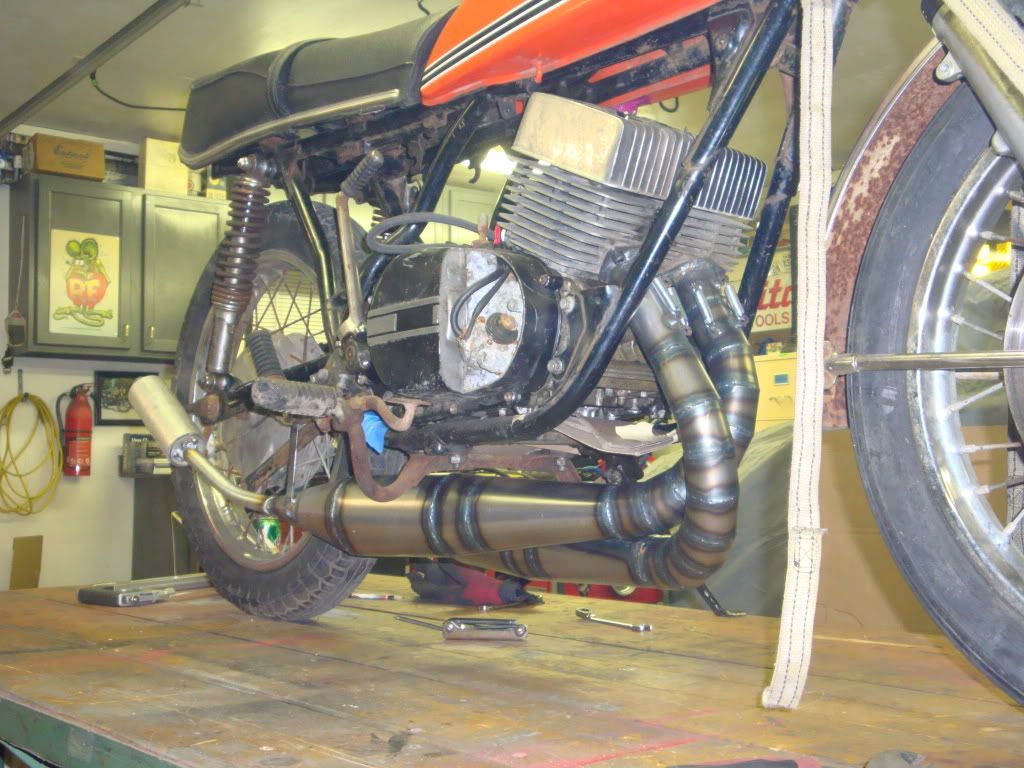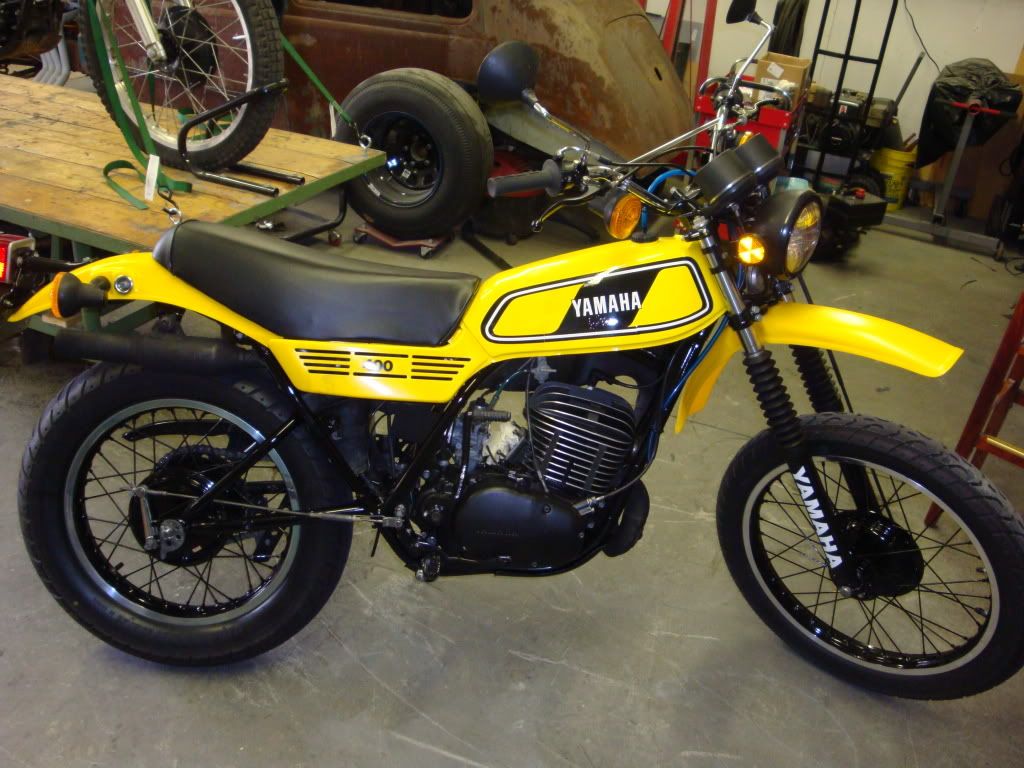from
Cycle Guide, 1977
Yamaha RD 400
Year
1976
Engine
Air cooled, two stroke, parallel twin cylinder, reed-valve 'torque induction
Capacity
398
Bore x Stroke 64 х 62 mm
Compression Ratio 6.2:1
Induction
2x 28mm Mikuni carbs
Ignition / Starting
Battery, dual coils, breaker points / kick
Max Power
40 hp claimed@ 7000 rpm
Max Torque
4.2 kg-m @ 6500 rpm
Transmission / Drive
6 Speed / chain
Front Suspension
Telescopic forks
Rear Suspension
Swing arm, dual shocks
Front Brakes
Single 256 mm disc
Rear Brakes
Single 256mm disc
Front Tyre
3.25-18
Rear Tyre
3.50-18
Wet-Weight
171 kg
Fuel Capacity
13 Litres
Consumption average
43 mpg
Standing ? Mile
14.1 sec / 90.1 mp/h 145 km/h
Source Cycle Guide of 1977
Dearly beloved, you can begin to wave good-bye to all those two-stroke roadsters we've known and loved for years. Kawasaki's KH400 triple has been laid away, and Suzuki has rung up the flower car for their two-stroke roadsters. The four-strokes have won the sales derby; more important, they have a better chance of winning the government emission tests. But before you get all teary and blow your nose, you should know that's all the bad news.
The good news is that RD400 Yamaha is still with us, and will be present or accounted for on the performance scene until at least 1980. And however attractive the old Kawasaki KH400 was, and how-ever utilitarian and -sturdy the GT-380 Suzuki was, there can be no doubt that the Yamaha RD two-strokes have been the most charismatic little rockets built in the last decade. So it has come to pass, as we climb the mountain of bureaucratic red-tape and finally see below us the Valley of the Shadow of Clean Air, that the first name in two-stroke performers shall be the last to go. Hallelujah: we can still do the reed-induction boogie.
If there's one word that describes the Yamaha RD400 series, the word is intense. The all-disc brakes are intensely powerful, an RD tradition since the motorcycles were disc/drum 350s. The RD Yamahas have always been quick steering motorcycles, thanks to a 52.5-inch wheelbase, 27.5 degrees of rake, 4.3 inches of trail, and a wet weight of 379 pounds. This kind of motorcycle isn't really guided into and manipulated through a corner; rather, RD Yamahas simply dart into the entry and out the exits.
If you weigh 185 pounds with riding gear, you're likely to dispense with a great deal of body English. Or if you must hang off, knee-out and whatever, then you do it with as much fluidity and precision as possible. An RD with a jerky, indecisive pilot on board becomes teetery and uncertain. Whatever you put into the bike, it tends to translate that input, amplify it, and feed it back to you. Call it intensity.
The engine has a high degree of sensitivity. The RD400 seemingly magnifies a quarter-inch turn at the twistgrip to a yards-long leap at the rear wheel. The engine is like the brakes: a little at the controls does a lot at the wheels. In about the first tenth-mile, the RD400E serves notice: be careful and well, or be foolish and sorry.
It's the way the two-stroke engine delivers its power that separates the RD400 from all the four-stroke twins. The four-stroke twins seem to accelerate by pulling themselves through the rev-range; though revs build with determination, no 400cc four-stroke twin goes through its rev-range with a blinding rush. By comparison, the RD400E delivers power in an explosive, instantaneous way. The revs build so rapidly that the tachometer always seems to be one shift behind.
If you rode the new Honda Hawk 400 four-stroke back-to-back with the Yamaha RD400E, you'd swear that Yamaha's two-stroke jet would yank the headlight right out of the Honda. The RD400E launches from a standing-start by lofting the front end, and a reckless clown could put himself into a vertical ground-loop. Moreover, a hard, fast shift into second can pull the front wheel right back up. When accelerating around cars the RD400E seems to cook along well, right to 6500 rpm, at which point the power rises to a real boil. On the other hand, the Honda Hawk, with an incredibly wide power band and no great blips in the power curve, is impressive only in the sense that it just drones forward: no eye-bulging, no breath-taking drama.
Imagine our astonishment when we discovered that the RD400E does the quarter-mile slower than the Honda Hawk. Our test RD returned 14.8 seconds at 87.71 mph in the quarter; the quickest Honda Hawk, as tested in the August, 1977 issue, clocked a 14.6-second/87.4-mph standing-start quarter-mile.
Confused and dismayed, we returned to the office, and checked the performance figures obtained by the RD4000, tested in the April, 1976 issue. That confirmed the fact that RDs can be fast; that particular test bike snapped through the quarter in a 14.15-second/94.36-mph pass. Furthermore, our sources at Yamaha International knew of no changes in specifications that would so radically diminish the performance between C-types and E-types.
The CB400 Honda makes more horsepower over a wider rpm-range than a RD400E. Over a 3500-rpm band, the Honda is putting out over 30 horsepower, peaking at 35.58.
The RD400E dynoed over 30 bhp only in a 1500-rpm range, producing a maximum 34.18 horsepower at 7500 rpm. Furthermore, the RD400E jumped from 25.34 horsepower at 6000 rpm to 31.11 at 6500 rpm. That's what you call coming in with a bang.
On the torque side of the chart, you might expect that the Honda would show more pounds-feet over a broader spread than the RD400E, but this isn't quite how things turned out. The Honda stays over 20 pounds-feet through a 3000-rpm slot whereas the E-type is over 20 for a 2500-rpm band. But the Yamaha makes considerably more torque. The Honda peaks at 21.36 pounds-feet; the Yamaha pulls above 22 pounds-feet from 6000 to 7500 rpm. The 1976 RD400C ? the 14.1 second bike?had a broader, fatter torque curve than the 400E Yamaha, to say nothing of the 400 Honda. All the evidence suggested that the 400E, in sharp tune, could run a much quicker quarter-mile.
Our tune-up included resetting the ignition timing to the specified 2.30 mm BTDC. The timing had slipped to 1.95 mm BTDC on the left cylinder, 1.99 mm on the right. We fitted NGK B-7ES spark plugs, a range hotter than the deposit-coated B8ES plugs that came out of the bike. The plugs were gapped on the narrow side of the spec (.020-inch to .030-inch) because the Yamaha ignition coils only induce the plugs to fire weak-looking whitish-blue sparks. Since the old 350 Yamahas were notorious for wispy sparks, Yamaha RD400-series bikes carry upgraded ignition coils, but we think Yamaha should still consider improving the upgrade. We'd like to see enough spark energy to power a small welder.
The tune up brought the performance up, but not much. The RD400E turned a 14.72/89.87 mph quarter?an improvement, but not the big one we expected. It was a 105 degrees at the dragstrip leaving the bike over-rich and the spark still seemed weak, but all excuses aside, the 14.7-second quarter disappointed us.
Few changes have been made in the RD400 since it appeared in the 1976 model year. At that time Yamaha re-engineered and re-worked the RD350 so substantially that the company in effect created a new motorcycle that only happened to look very much like the old one. (See Cycle, April 1976). After that, Yamaha did minimal updating. The RD400D had an altered paint scheme, a bit more fuel capacity, and a different seat. Again in 1978 very little has been changed.
The seat has been altered, this time sporting a crypto-road-racerish shell, very much like the one used on the XS400D last year. The cast alloy wheels have been painted black, and the polished aluminum edges of the spokes (and rims) highlight the wheels. The RD400D bore a Yamaha logo on the brake calipers; that script has vanished on the E-types. And with the new seat has come a new tail-light assembly, again identical to the XS400D unit. The E-type has a constant-on headlight, a safety "improvement" unknown on the D.
Most changes are cosmetic in nature, and it's not likely that Yamaha will alter the bike in any significant way in the near future. After all, since the departure of the Kawasaki KH-400 triple, and with the impending exit of the Suzuki GT380, the RD400E is the only 400cc two-stroke sports/touring bike available.
RD performance arrives at the rear wheel courtesy of an amazingly simple powerplant. In these days of 400cc four-stroke twins with one or two overhead camshafts, two or three valves-per-cylinder, and full complement of contra-rotating balancers, Yamaha's two-stroke twin seems like a monument to simplicity. The 64mm x 62mm (bore and stroke) cylinders draw air in through two 28mm Mikuni carburetors and two reed-valve assemblies. Reed valves have been used since the days of the old RD350 to spread out the power. Yamaha has succeeded in this respect, though the engine definitely begins to perk harder (as the dyno reveals) when the rev-counter needle swings past 6500 rpm.
The most interesting thing in the intake system is the RD400's anti-cackling, anti-surging modifications to the reed petals (uppers and lowers have different stiffnesses), the cylinders (.080-inch passageways in the cylinders lead from a point above the exhaust port windows, through the liner walls, and into the exhaust ports), and pistons (slots in the pistons' exhaust skirts open the crankcase to the exhaust port when the pistons are at TDC). The dynamics of this intake, crankcase and exhaust fiddling are complicated, but the result is pretty simple. It eliminates the surging associated with high-performance two-strokes running at partial throttle, say 45 mph in fifth gear, by weakening the out-of-synch resonating pulses that go through a two-stroke's intake and exhaust system just before the engine gets on its pipe, and all the pulsing comes into synch.
Pistons for these reed-valve twins have windows in the intake sides of the pistons. Slotted and windowed pistons are more likely to collapse with prolonged use and get rattly. Moreover, much of the area in a reed-valve cylinder is taken up by ports, so that the liners offer less contact area for the pistons than might otherwise be the case. The ports-everywhere liners and shrinking pistons eventually produce enough racket to be noticed. This two-stroke clatter is nothing too serious, just annoying and normal.
Yamaha went to a great deal of trouble to silence the RD400 series; indeed, on the induction side, a mammoth air-box filter-unit was designed to hold down the noise and still pass a sufficient volume of air to maintain the aspiration-requirements of the engine. The sheer size of the airbox necessitated a redesign of the frame behind the engine and below the saddle. Despite Yamaha's efforts, the RD400E is still a noisy machine at start-up and idle. There's a fair amount of intake honk that is supplemented by piston/ cylinder noise and well-defined pop-pops from the exhaust pipes. But if you like two-strokes, it's not a bad cacophony at all.
Two-stroke twins have a vibration problem that's not as severe as the 400cc four-stroke twins. Or at least the two-stroke's problems make solutions easier. The low-amplitude, high-frequency vibrations in the RD400 are mainly isolated by rubber-mounting the engine. This allows the engine to vibrate furiously on its soft mounts, but the vibration stays away from the rider. In an effort to be thorough, Yamaha has rubber-mounted the footpeg holders, so only by touching the engine is the rider aware of the unit's activity. Rubber joints between the head pipes (that bolt directly to the shaky engine) and the mufflers?solidly attached to the frame?flex enough to keep the exhaust system intact.
The new saddle is lower and firmer than the sitzer fitted to the original RD400. The first 400 always gave the rider a sensation of sitting on top of the machine, and having to reach down to find the motorcycle. The RD400E, by contrast, positions the rider so that he feels more part of the motorcycle, more in it. One-hundred and fifty miles is an easy distance to ride the RD400E. As the miles roll by, the motorcycle becomes less comfortable though that's not really a function of the saddle. The small physical size of the RD400E cramps larger riders over long hauls.
Staffers warmly remember the freeway manners of the first RD400 which had an almost BMW-type ride. The E-type feels as if it's sprung more stiffly than the whoosha-whoosha RD400C. Other current-year Yamaha street bikes have stiffer suspensions than before, in part a recognition that super-soft springs cause the motorcycle to nose-dive under braking and to lose cornering clearance, and in part a response to riders who accessorize their bikes with heavy fairings and other touring gear.
In the suspension department, our main complaint centers on the rebound damping of the shock absorbers. The damping gets limp after you've been thrashing around on bumpy back-country roads, and that causes the RD400 to feel vague and rubbery in a corner. Riding the Yamaha really quickly is a task that takes a lot of concentration, and it's the kind of bike that you like to get through a corner in one swoop with no corrections at mid-passage. It does nothing for your concentration or tidiness to discover that the RD is beginning to waggle.
There are other reasons to keep your focus while jetting with the RD400E. The disc brakes work with an almost ferocious effectiveness; unless you exercise a certain amount of care, you could overbrake and lose the bike. Applied somewhere near their limit, the brakes will let you plunge so deep into a corner that you stop breathing from entrance to apex. Hopping on the gas too hard in a first- or second-(and sometimes third-) gear corner can get the front end very light, and you must recognize that a hot throttle hand can unload the front end enough to make steering highly problematical. The Yokohama Speed Master tires stick very well under acceleration, braking, and cornering loads; nevertheless, given the forcefulness with which the RD400E can be ridden, a rider must make sure he doesn't pass through the tires' margins of safety.
On a freeway, the RD400E has enough suspension compliance to iron out most of the small ripples and breaks in the pavement. However, the effect of hitting joint seams between the concrete slabs can be felt at the handlebars. For steady-state freeway cruising we remember the softer-sprung RD4000 as more comfortable on the great concrete roadways. While the riding position, saddle comfort, and vibration control make RD400E an acceptable go-to-work and errand-running motorcycle, that seems such a waste. Though one staffer has an easy seven-mile home-to-office commute (comprised of two miles of boulevard riding and five miles of freeway), he found himself running the back-route to the office through 12 miles of twisty roads.
To be sure, the RD400E can toot down the freeway, offering most all those convenience features typical of Japanese motorcycles, including the trick Yamaha directional signal that measures distance and shut itself off automatically. Still, if you're the kind of guy who eyes the freeway exits looking for an interesting road to add to your collection, then you'll intuitively understand the RD400E. And you'll rejoice in the Good News that this high-performance two-stroke is still alive and well in 1978
http://www.motorcyclespecs.co.za/model/yamaha/yamaha_rd400c 76.htm
That's 85% of claimed HP after dynoing, about par for the course, and a fairly-accurate estimate of 'at the crankshaft' 40 HP claimed in ads. Figure a bit less for the RD350's. The surprise is the 400 Honda Hawk's e.t. I always considered that to be dog-slow, one of my friends had one, I rode it, and my brother had an R5, I never would have thought they were anywhere close to one-another in performance. I guess the tuning of the powerband has a lot to do w/your perception, a 'peaky' powerband is felt to be more output than a more-linear one. I have fond memories of my H1 500 Kawi from the early '70's. It would leave my friend's brand-new Sportster 1000 in a cloud of Bel-ray exhaust smoke as I left him in any acceleration contest. 